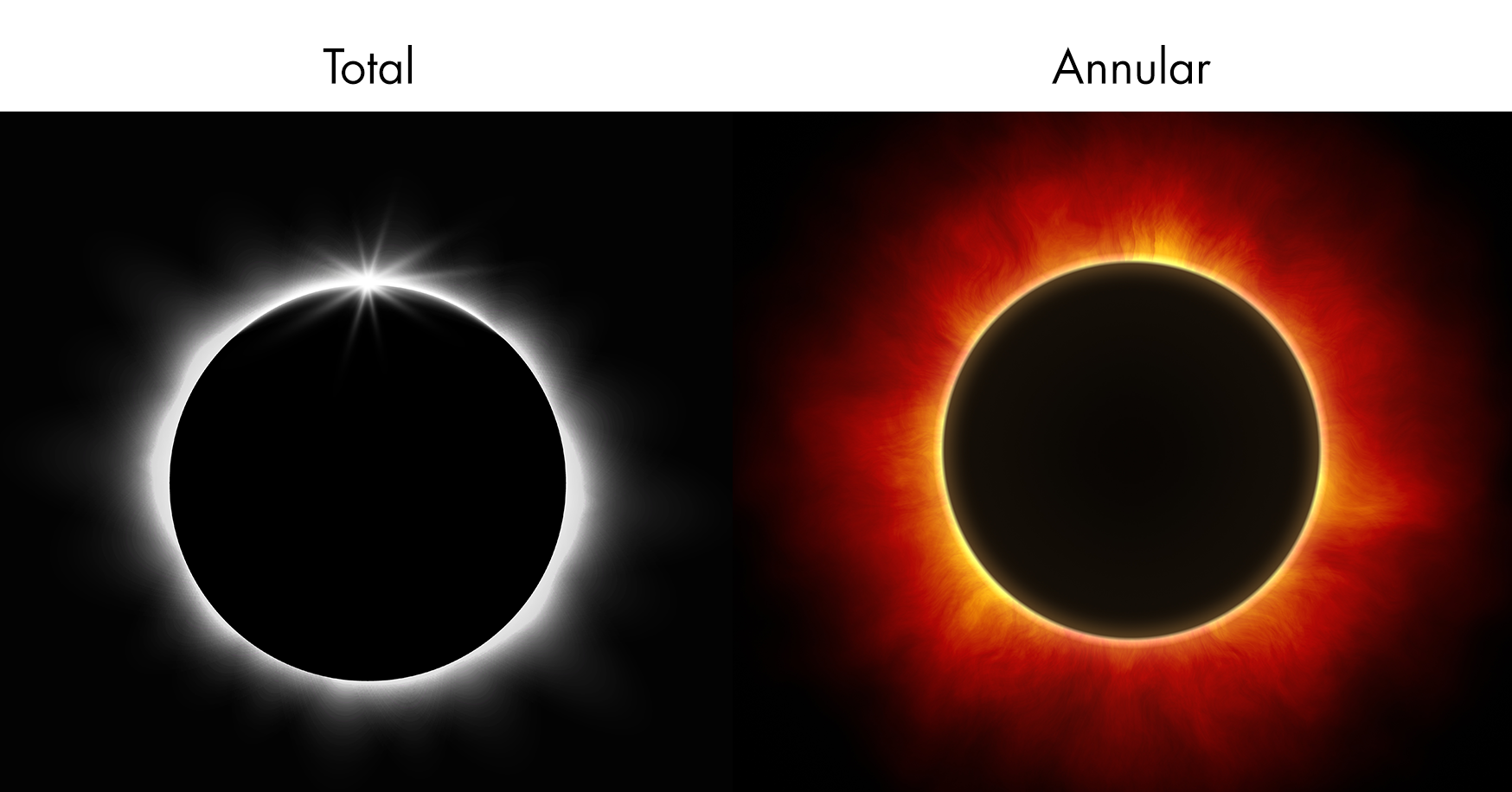October 14 eclipse: what we’re doing to prepare
Rapid growth in grid-scale and distributed energy resources have transformed the Western electricity market in recent years. With more weather-driven supply resources, accurate short-term forecasts and uncertainty products have become increasingly important for managing this additional complexity as the West transitions towards a more carbon-free grid.
The ISO and its short-term forecasting and system operations teams have been busy modeling and analyzing the impacts of the rare annular eclipse occurring on Saturday, October 14, 2023. An annular eclipse is different from a total solar eclipse in that the moon will only obscure a portion of the sun, unlike a total solar eclipse where the sun is 100% covered.

The eclipse will last for approximately three hours, beginning at 8 a.m. Pacific Daylight Time (PDT) and will reach its maximum obscuration at 9:30 a.m. The exact timing and percent of obscuration will vary with location relative to the eclipse path. Most areas within the Western Energy Imbalance Market (WEIM) will experience obscuration between 65-90%.

There was a total solar eclipse on August 21, 2017; however, the ISO and WEIM grid operations have changed considerably since then. Within the ISO area since the 2017 eclipse, grid-scale and rooftop behind-the-meter (BTM) solar capacity have grown by about 65% and 150% respectively. And other Western states have significantly increased their solar capacity over that same time period. This means that the upcoming eclipse will have a larger impact on the ISO and most of the 21 WEIM participants compared to the previous one so there is a tremendous amount of collective analysis, communication and coordination that must take place to make sure we maintain reliability on the grid during and after the event.

As its own balancing authority area and serving as Reliability Coordinator for most of the West, the ISO has been leading a robust coordination effort to raise awareness for potential impacts to grid operations during the event and our work will continue for weeks to come. This coordination kicked off on September 5 with an open stakeholder call sharing the results of the 2023 October Eclipse Technical Bulletin that we published on August 31.
Careful coordination and planning are essential across all balancing authorities to manage the potentially steep ramping conditions in renewables generation and load during the eclipse. In the context of electricity and grid operations, ramping refers to the rate of change in power flow over a given time period. Grid operators pay close attention to ramping requirements driven by changes in renewable generation (wind and solar) and load. Net load, the difference of load, wind and solar, represents load that must be served by other resource types. Grid operators have to ensure that the right mix of resources are available and following their optimal operating instructions to maintain grid stability. This can be more of a challenge when net load ramping conditions are steep.

Since the annular eclipse will obscure a large portion of the sun, it will reduce output from both grid-scale and rooftop BTM solar generation. On the eclipse day, weather conditions like cloud cover will have a strong influence on the magnitude of eclipse impacts. Assuming clear-sky conditions at the time of the eclipse maximum, the grid-scale solar output will be reduced by 9,687 megawatts (MW), or about a 75% of our usual available capacity, compared to a sunny October day at the same time. From the eclipse maximum to the eclipse end, solar production will increase by 10,800 MW over the course of 90 minutes. This is an increase of about 120 MW of grid-scale solar per minute — 10 times the normal rate of solar increase, or ramp.

The ISO load will also be affected by the reduction in rooftop BTM solar generation which will lead to an unusual dual morning peak on the eclipse day. Following the typical morning peak around 7:00 a.m., the ISO load will increase by 2,343 MW as the eclipse reaches its maximum. As the eclipse wanes, the ISO load will decline by 6,643 MW leading into the usual afternoon trough as rooftop BTM solar generation returns.

Eclipse impacts across the WEIM footprint will vary depending on proximity to the eclipse path and levels of installed grid-scale and BTM solar capacity. The table below shows that the Desert Southwest has the most installed BTM solar while the Central WEIM region has the most grid-scale solar when it comes to total capacity. For this reason, we have been coordinating with WEIM entities to share information about the potential for steeper ramping conditions during the eclipse period.
| WEIM Region | Approx. Grid Connected Solar (MW) | Approx. Rooftop BTM Solar (MW) |
| California | 1,561 | 953 |
| Balancing Area of Northern CA (BANC) | 407 | 335 |
| Los Angeles Department of Water and Power (LADWP) | 1,154 | 564 |
| Turlock Irrigation District (TID) | 55 | |
| Central | 4,807 | 1,453 |
| Idaho Power Company (IPCO) | 473 | 116 |
| Northwestern Energy (NWMT) | 178 | 38 |
| NV Energy (NVEP) | 2,471 | 835 |
| PacifiCorp East (PACE) | 1,685 | 464 |
| Desert Southwest | 2,851 | 3,402 |
| Arizona Public Service (AZPS) | 794 | 1,761 |
| El Paso Electric Company (EPE) | 285 | 170 |
| Public Service Company of New Mexico (PNM) | 841 | 340 |
| Salt River Project (SRP) | 436 | 497 |
| Tucson Electric Power (TEPC) | 428 | 503 |
| WAPA Desert Southwest Region (WALC) | 67 | 130 |
| Pacific Northwest | 1,061 | 650 |
| Avangrid (AVRN) | 522 | |
| Avista (AVA) | 20 | 21 |
| Bonneville Power Authority (BPA) | 138 | 88 |
| PacifiCorp West (PACW) | 381 | 173 |
| Portland General Electric (PGE) | 161 | |
| Puget Sound Energy (PSE) | 149 | |
| Seattle City Light (SCL) | 44 | |
| Tacoma Power (TPWR) | 15 | |
| WEIM Totals | 10,280 | 6,458 |
An eclipse is a unique and rare event that captures the public imagination and requires a lot of coordination. The ISO will continue to communicate with neighboring utilities, state leadership and our stakeholder community to ensure eclipse impacts are appropriately factored into operational forecasts and other preparations leading up to and through the eclipse event. Similar to the 2017 eclipse; we expect that these additional planning measures will help us successfully manage the eclipse in October.


